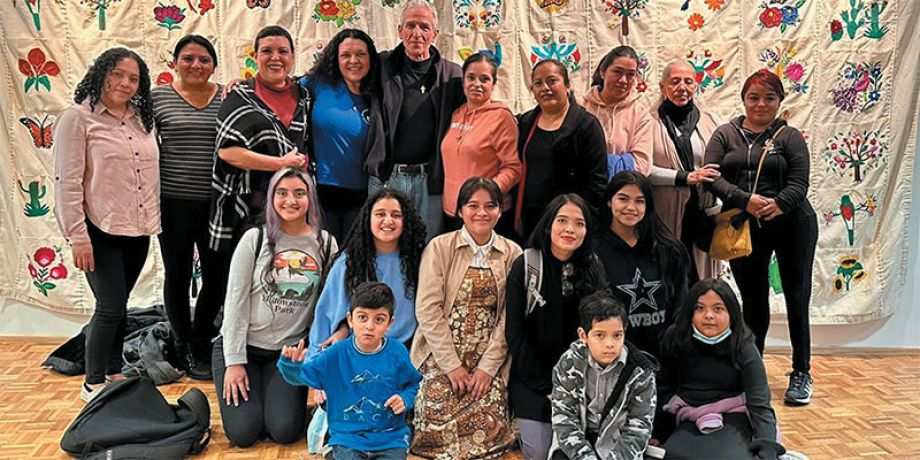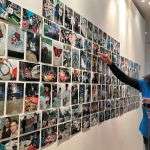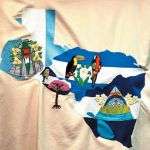
One of most intriguing yet mysterious images that Jesus uses in His proclamation of the Good News is, “The Kingdom of God!” It is within you! It is among you! It is already but not yet! And how does it grow? Like a seed sown by the farmer that matures and sprouts during the night without the farmer knowing how! And it always grows like the smallest and most simple things in our daily lives. A pinch of leaven causes the whole loaf to rise. The tiny mustard seed grows into the huge bush where even the birds can nest. It is mysterious but not really that difficult to grasp. What Jesus teaches us is real and achievable if we have faith. If we are obedient. If we work together humbly as brothers and sisters of one family. If we truly believe, God can achieve things through us that will go far beyond our wildest imaginings.

In January 2019, when the Remain in Mexico policy of the Trump administration forced thousands of Central American refugees seeking asylum in the U.S. to remain in Mexico, the Columban missionaries became concerned for their emotional and physical well-being as they waited, at first for weeks, then months and for some, over a year to present their cases in the U.S. Immigration Court. There were families living in the streets as the various migrant shelters became filled, over-crowded, and were often poorly managed. By the grace of God, an empty building near the Columban parish in Anapra was loaned to us by the Sisters of Charity of Cincinnati, to create a shelter for refugee women and their children. Thus, in September of 2019 the “Casa de Acogida” or “House of Welcome” was born.
When Covid struck a few months later, the women were forced to remain in the house for long periods of time, trying to attend to their children, communicate with their families and do the daily chores of cooking and cleaning as they learned to live as a community. What could they do that would allow them to pass the time, something creative that could stimulate them and help avoid depression and desperation? Perhaps learning something new, creating something personal and beautiful and even earning a little income?
The Columban Migrant Ministry Coordinator, Cristina Coronado, who had set up “Casa de Acogida,” asked her sister, Maricela, a skilled seamstress, if she could teach the women to embroider. Maricela said, “Sí,” and one of those paths that leads to the Kingdom was opened wide. And like many paths that lead to the Kingdom, this one was not so much anyone’s plan being imposed but, rather, a response to the needs of vulnerable women and their children.
As the embroidering experience began, the women were asked what kind of images they would like to embroider. Eventually they responded—some of them weeping— that they wanted to reproduce the flowers of their native lands, the beautiful, colored parrots and coetzels of Guatemala and other beautiful birds and flowers from El Salvador, Nicaragua and Honduras. Maricela would draw in pencil on the fabric and then patiently instruct the women how to embroider them with bright yellows and reds, blues and browns, greens and magenta. As they continued to improve their skills and grow in confidence as a community, they decided they wanted a name for their group. After some debate and discussion, they came up with the clever title: “NicHonSaGua,” an acronym that employed the first couple letters of each of their Central American countries.
Eventually the Columban Mission Center in El Paso began to return to Anapra with their Border Awareness Education (BAE) groups and one of the top requests was to visit the “House of Welcome,” where the ladies and their children shared their oftenharrowing tales of escaping death threats, rape, pressure to join gangs, poverty and corruption. Word spread and other visitors and groups began to come and see the Casa de Acogida and learn about the experiences of these valiant women. The Jesuit Encuentro Program from El Paso, the Sisters of Mercy of the Americas and one unusual group: The Swiss Embassy from Mexico City. The final moment of the visit was always the presentation, by the women themselves, of their now beautifully embroidered bags, which they happily sold to the group participants. Everyone left with a piece of Central America, a heart moved by human courage and resilience, and the blessed experience of dwelling in a little corner of the Kingdom of God for an hour or two.
Now more confident with their embroidering skills they also began to imagine other creative possibilities of applying their craft. Cristina said Iliana would like to embroider a chasuble with an image of the blessed Sacrament. As a group the ladies would like to embroider a green chasuble for Ordinary time with an image of Central America and then a purple Advent vestment adorned with beautiful Cacti, framed in cream cascading down the front of the chasuble.
Gradually, these Central American refugees— pilgrims and prophets sent to remind us of who we are and how our politics and lifestyle affect their impoverished countries— received asylum in the United States. With their departure we discerned the value of inviting women from the parish who were at risk, struggling economically or otherwise in need of community support, to become part of this embroidery community that was weaving a new way of life for its members—and our Columban parish!
The now reconfigured group, again took off and began to grow: in embroidering skills, diversity and depth. There were Salvadorans, Guatemalans, Mexicans from various states, Haitians, the young, middleaged and elderly, some with special needs physically and emotionally, embroidering with their hands and creating a tapestry of relationships with their hearts. The Kingdom was here.
At times their meetings were contemplative, with barely a word spoken. At other times, there was a cacophony of voices and laughter as they shared stories, family problems, personal struggles and the ways their faith had helped them find their way.
One woman shared that in the group she came to discover that she was a person in her own right, that she existed, that apart from all the cooking, cleaning, ironing and caring for her family, she was an individual with thoughts, opinions, her own needs and dreams.
Another one of the women who considered herself to have no faith at all, felt at times moved and inspired by the faith of the migrants who had braved hell and high water to find refuge for themselves and their children. “Gracias a Dios,” “Thanks be to God!” they would say about arriving in a safe place like Casa Acogdia. Expressing their hopes and desires to continue their migrant journey to a better life, “Primero Dios” or “Si Dios quiere,” meaning, “If it is God’s will, so be it!”

Lives were enriched, broadened, as new friendships formed and the parish found itself learning how a simple project could bear fruit in so many unexpected ways. The Kingdom of God was growing.
This past June we celebrated the one-year anniversary of the Embroidery Project in the Parish. We had a special Mass with a beautiful banner that the women had created by stitching together several of their embroidered images and titling each one with words that express God’s hope for the human family:
Amor — love, Fe — faith, Paz — peace; Comunidad — community, Encuentro — encounter; Esperanza — hope; Libertad — liberty, Justicia — justice, Solidaridad — solidarity hung alongside the altar.
Before the final blessing, several of the women shared how their participation in the group had changed their lives. It was a moment to give thanks for the mysterious way that God was evangelizing all of us in the parish through the presence of this simple project in our community aimed at providing a safe space, some meaning and accompaniment for vulnerable migrants. After the Mass there was a delicious meal prepared by the women, and everyone stayed to enjoy the celebration of life, hope and community that their group had woven together.
We had another milestone on October 18, 2022, when we had the grand opening of a special exhibit at the National Institute of Fine Arts Museum in Juarez. This showing was related to the William Bullock Prize that Cristina received from the National Autonomous University of Mexico (UNAM) as a result of her work with at risk women in Juarez. It portrayed the formation and growth of Casa Acogida and the Emboidery Project. It included a beautiful photocollage of daily life in Casa Acogida, embroidery pieces by the women and original paintings by Yvonne, a young woman from El Salvador who decided to remain in Juarez to serve as a volunteer to other migrants.
I would like to conclude with a few words by Cristina’s son, Pablo, who is doing graduate studies in history at the University of Texas in El Paso, and who composed the introduction that welcomed visitors to the exhibit:
“The Casa de Acogida is not so much a shelter, but a community of faith made up of women from Juarez and migrant women who met as a result of the exodus of thousands of refugees from Central America seeking asylum in the United States. In the midst of a bleak panorama, the community that arose in this space has been like a second family for the participants. Single women and women with small children formed a bond that grew more intimate by sharing stories, dreams and hopes around the table of welcome in the kitchen of Casa de Acogida.
The embroidery project is like a search to capture and transform stories of pain, hope and resilience through art, offering the women of Casa de Acogida the chance to earn some income, but also to connect with the inhabitants of Anapra, one of the most impoverished areas of Ciudad Juárez.Casa de Acogida, begun as a response to the needs of vulnerable migrant women, following its origins of faith and solidarity, will continue to be a space for personal accompaniment and spiritual growth for women and, Lord willing, have a great impact in the community around it.”
Columban Fr. Bill Morton lives and works in Mexico.






